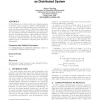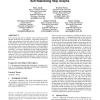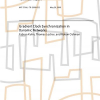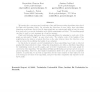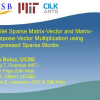PODC
2009
ACM
15 years 5 months ago
2009
ACM
In 2004, Klavins et al. introduced the use of graph grammars to describe--and to program--systems of self-assembly. It turns out that these graph grammars can be embedded in a gra...
PODC
2009
ACM
15 years 5 months ago
2009
ACM
Peer-to-peer systems rely on scalable overlay networks that enable efficient routing between its members. Hypercubic topologies facilitate such operations while each node only nee...
PODC
2009
ACM
15 years 5 months ago
2009
ACM
We define and study the bandwidth determination problem in adhoc P2P environments. Using point-to-point bandwidth probes, the goal is to quickly determine each host's upload ...
SPAA
2009
ACM
15 years 5 months ago
2009
ACM
SPAA
2009
ACM
15 years 5 months ago
2009
ACM
We analyze the correctness and complexity of two well-known routing algorithms, introduced by Gafni and Bertsekas (1981): By reversing the directions of some edges, these algorith...
SPAA
2009
ACM
15 years 5 months ago
2009
ACM
This workshop paper reports work in progress on NZTM, a nonblocking, zero-indirection object-based hybrid transactional memory system. NZTM can execute transactions using best-eff...
SPAA
2009
ACM
15 years 5 months ago
2009
ACM
Hash tables are one of the most fundamental data structures in computer science, in both theory and practice. They are especially useful in external memory, where their query perf...
SPAA
2009
ACM
15 years 5 months ago
2009
ACM
SPAA
2009
ACM
15 years 5 months ago
2009
ACM
Thread-level speculation (TLS) is a technique that allows parts of a sequential program to be executed in parallel. TLS ensures the parallel program's behaviour remains true ...
SPAA
2009
ACM
15 years 5 months ago
2009
ACM
In a max-min LP, the objective is to maximise subject to Ax 1, Cx 1, and x 0 for nonnegative matrices A and C. We present a local algorithm (constant-time distributed algorith...
